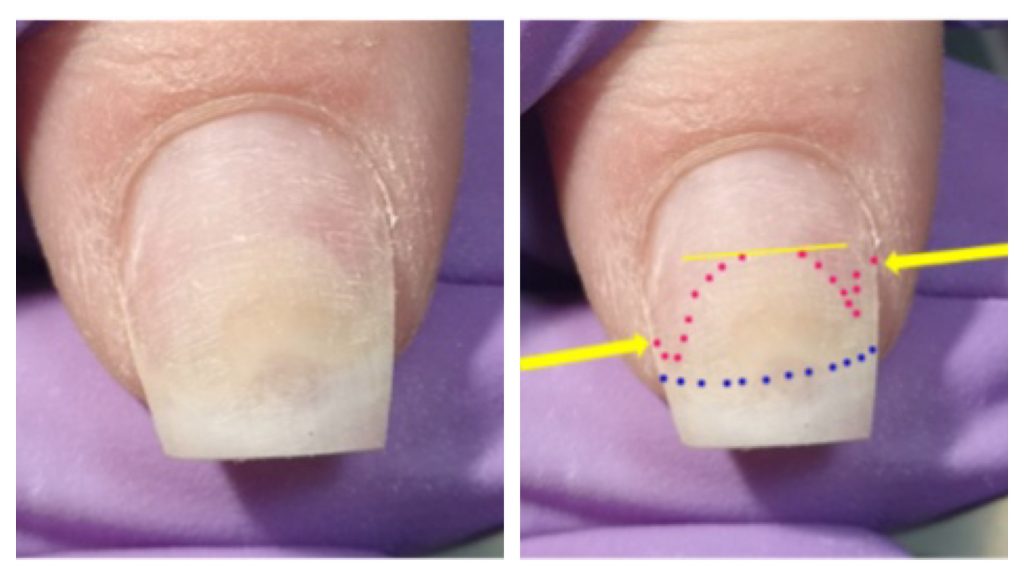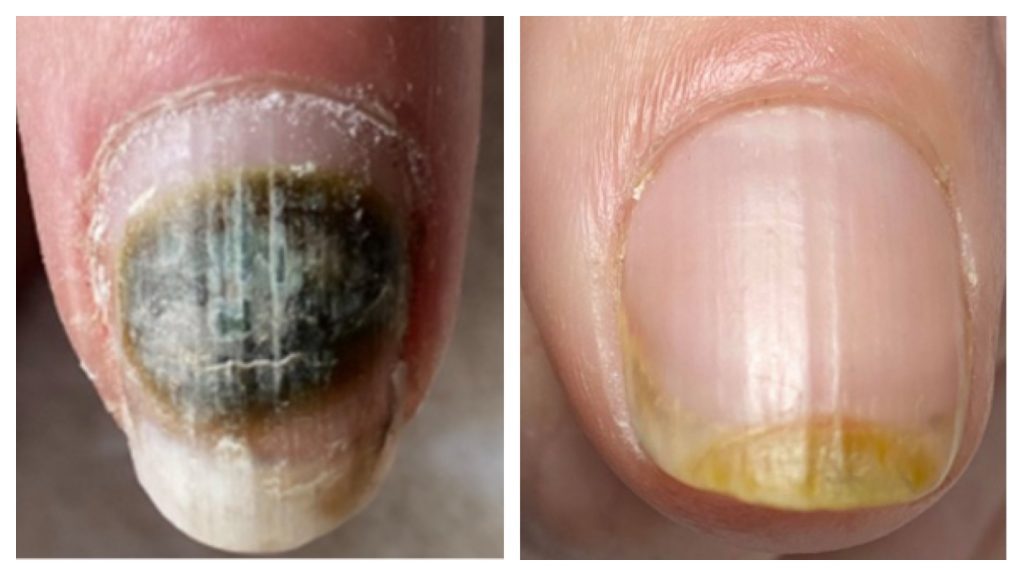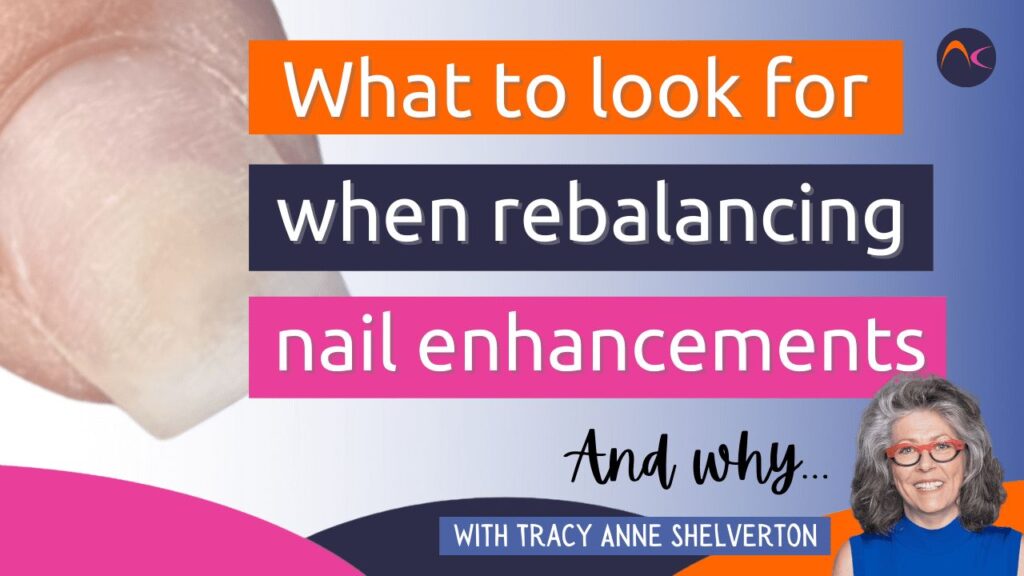After soaking off our gel polish or rebalancing our enhancements it’s important to inspect our clients nail plates for any signs of abnormalities.
We don’t want to see …
- Yellowing of the nail plate
Isso pode ser onicólise ou danos na placa ungueal interna
- Efeitos esverdeados na placa ungueal ou sob ela
Isso pode ser o início de uma infecção bacteriana
- Áreas de superfície branca e calcária na placa ungueal
This could be white superficial onychomycosis
Todos os três nos dão uma contra indicação para continuar a atender o cliente e todos os três precisam ser tratados de maneira completamente diferente. (Veja em nosso Condições das unhas seção)
Mas quantos de nós olhamos atrás the natural nail at the free edge? Be honest with yourself here – I know my nail tech does but we were trained in the same place so that’s logical.
Quero lhe mostrar uma coisa: Onicólise

This is what one of my colleges saw when she removed her artificial nail product – I forgive her the missing lateral side walls at the time she didn’t realise they were one of the 4 guardian seals of the nail unit.
The yellow line shows where the nail plate is attached to the nail bed like it should be.
The yellow arrows show where the onycholysis ends but also the amount of detached nail plate in the lateral nail fold.
A cor rosa pontua a extremidade proximal da onicólise.
Os pontos azuis onde o faixa onicodérmica and the hyponychium should be.
Have a look at this picture of the nail unit from under the free edge. The yellow arrows and line show the detachment of the hyponychium and onychodermal band.
Now imagine if this college was just doing an infill maybe from a dark blue or black hard gel or builder gel polish – no way she would see just how bad the onycholysis is a menos que ela olhasse para trás da borda livre. A onicólise consome quase 2/3rd of the nail! That’s enough space for a family of bacteria and other mean pathogens to have a vacation in for 6 months!

O que acontece quando perdemos isso?
Isso acontece! Pseudomonas Aeruginosa bacterial infection.

É aqui que você não quer estar. Esse cliente de um salão aqui na Holanda está trabalhando há 6 meses seguindo o protocolo para reduzir essa infecção bacteriana. A remoção da placa ungueal não era uma opção e não faríamos isso a menos que um médico ou uma enfermeira especialista nos pedisse e somente sob condições controladas.
Lastly – Onicomicose superficial branca

White Superficial Onychomycosis is a surface fungal infection that can affect not only the nails but also the skin – Here in the Netherlands we have a protocol to deal with this infection – please note to nunca file it of the nail plate as it can spread easily, become airborne and possibly enter your lungs.
But – se detectarmos esses problemas mais cedo – if we look behind the free edge during rebalancing, if we pay attention during removal we can see and deal with problems before they turn into nightmares.
Sometimes ‘stuff’ just happens, it’s not always something you did or didn’t do, maybe the artificial nail product just cracked and water seeped in and Pseudomonas Aeruginosa (it’s not called an opportunistic pathogen for nothing) had a field day and took hold, maybe the product cracked and she is vulnerable to WSO and it took hold (that’s really possible) and maybe your client has suddenly showed signs of an allergic reaction to your product (keeping away from the skin will help here) but when you don’t know what to look for and you are worried for your client its almost understandable that you just try to cover it up, but please don’t.
Get educated and fix the problem, accidents happen, that’s not the problem, the problem is ignoring them or not having the right information to snap them in the bud.
Don’t only get educated but keep renewing your education, times change, knowledge is expanded all of the time, medical science moves at amazing speed – it’s up to us to keep up!


